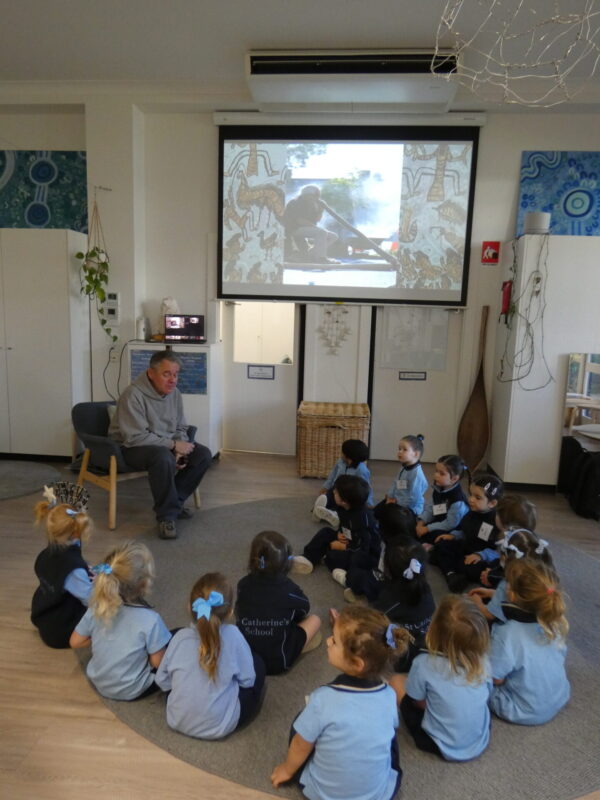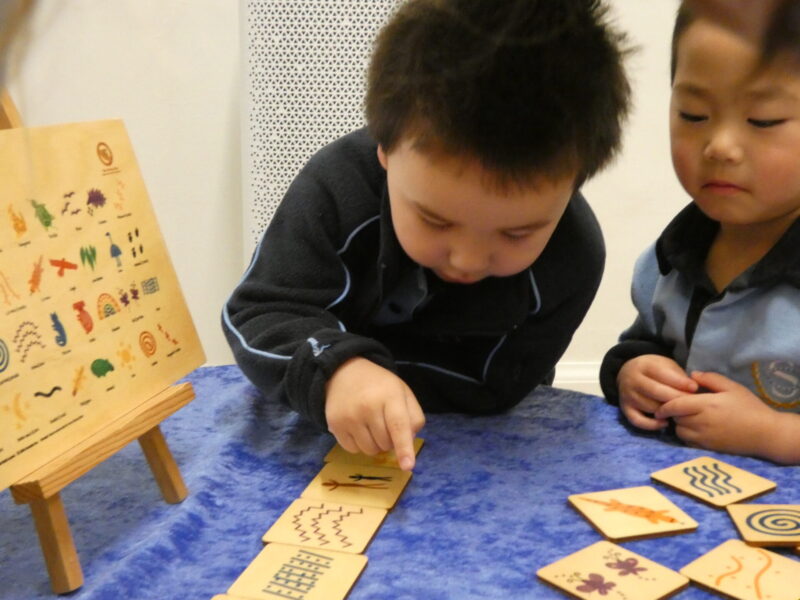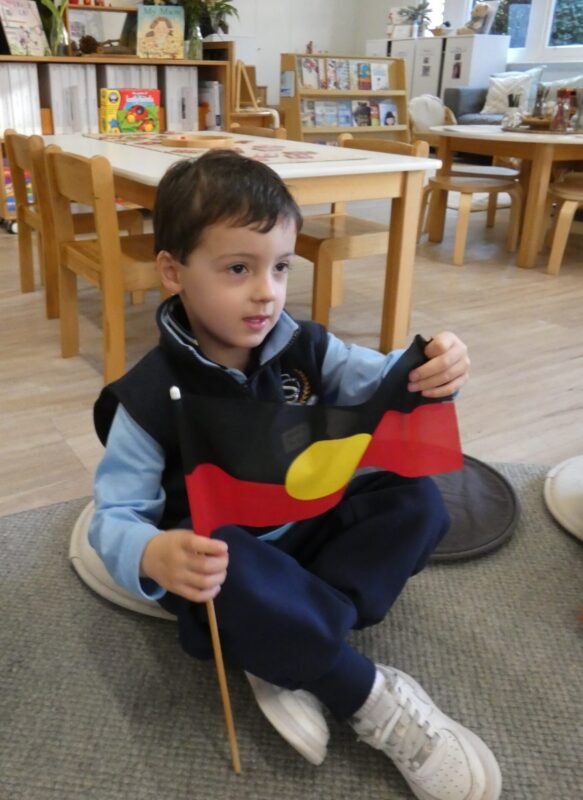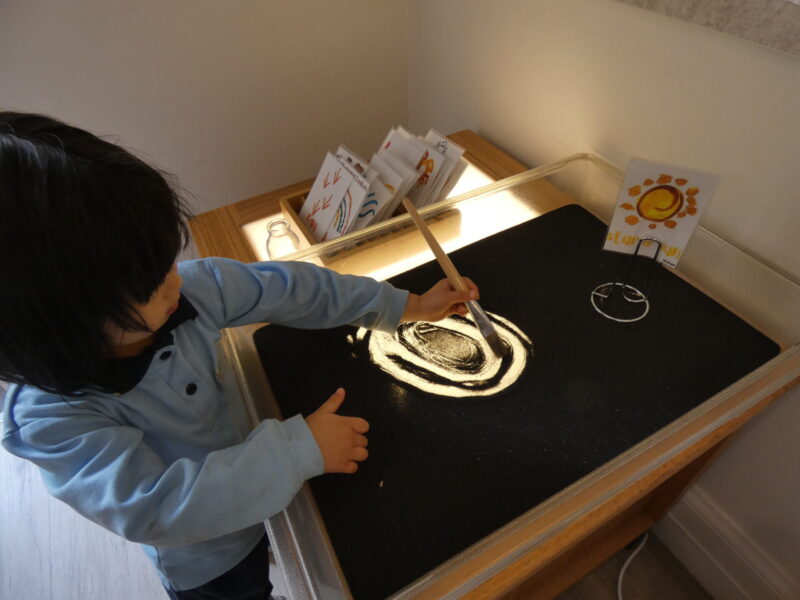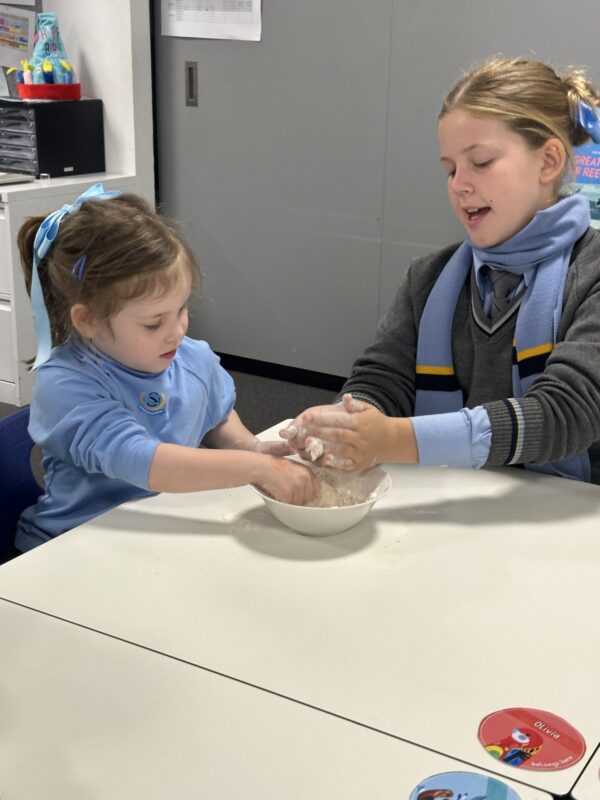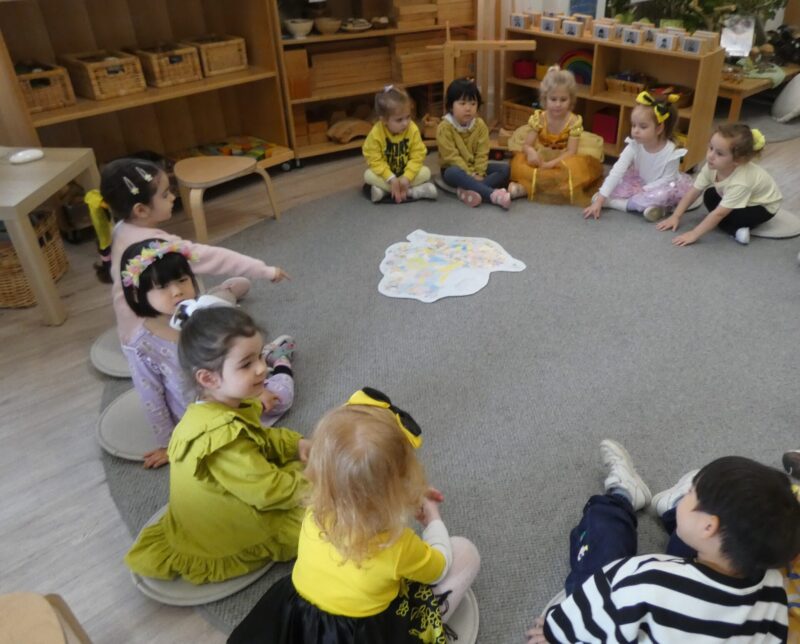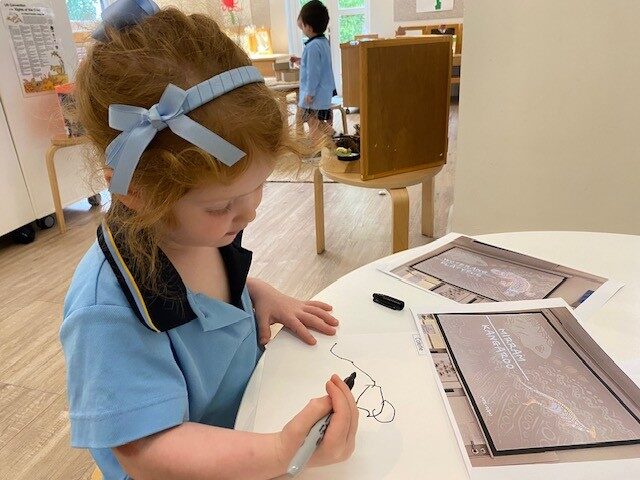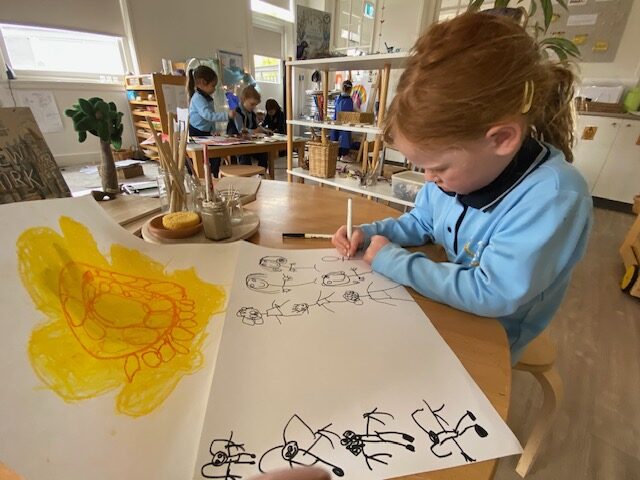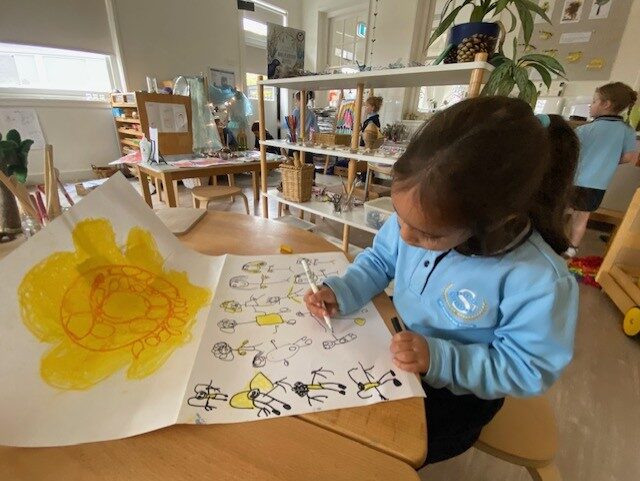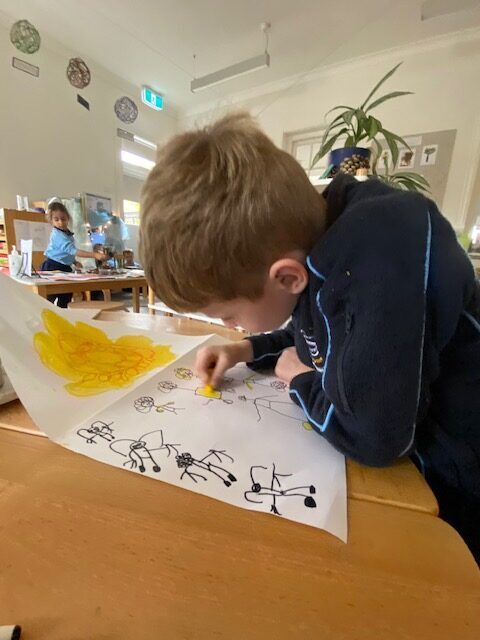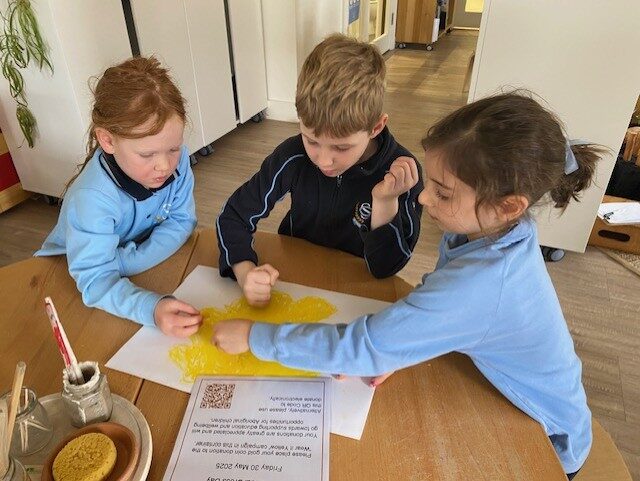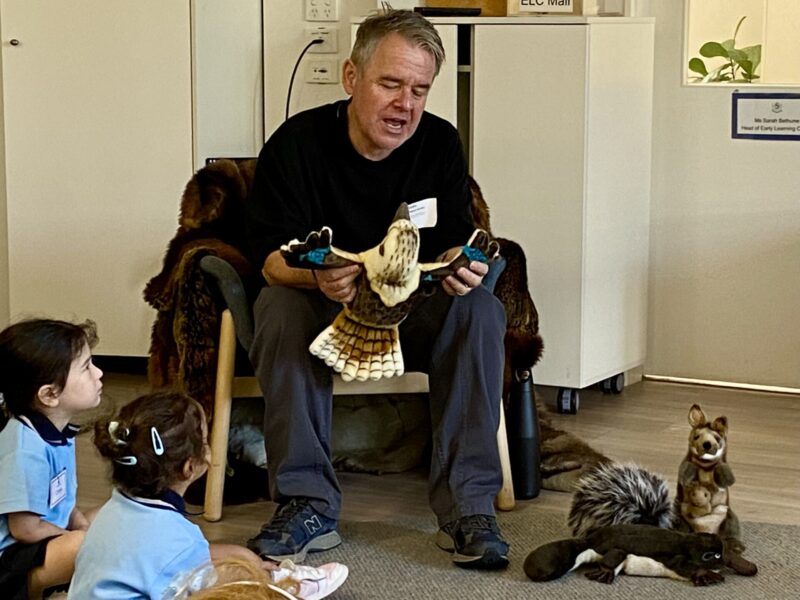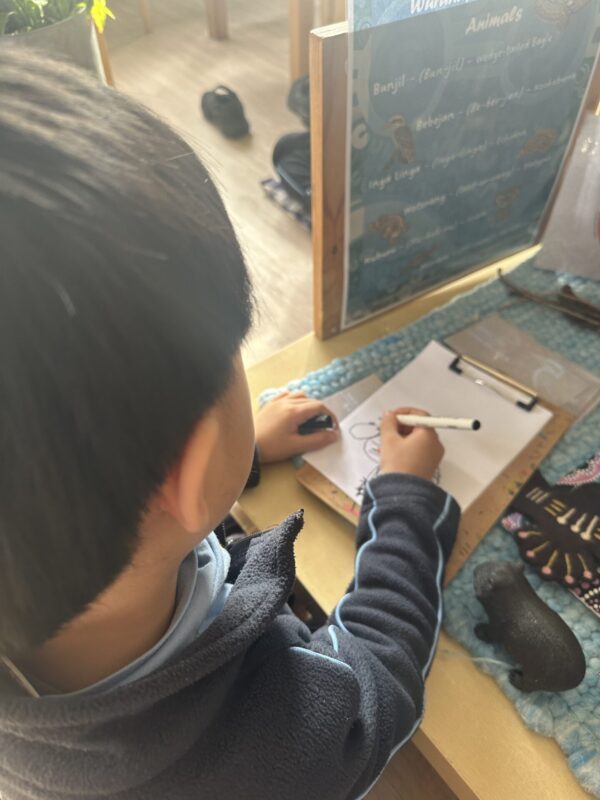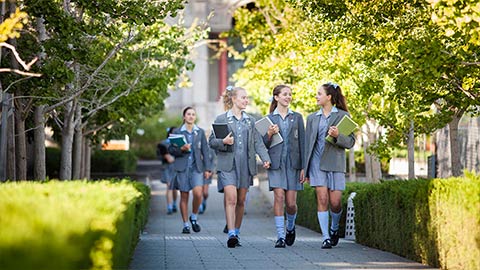Connecting with First Nations Culture and History
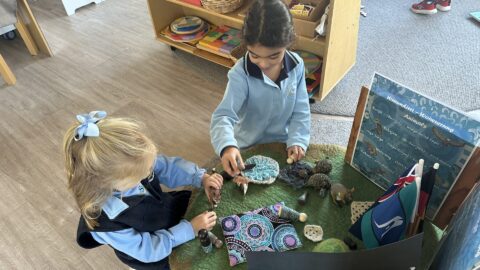
Supporting young children in learning about First Nations culture and history is essential for fostering understanding, respect, and inclusivity from an early age. Integrating this rich cultural heritage into children’s education involves a multifaceted approach that includes storytelling, hands-on learning experiences, and community engagement.
Storytelling is a powerful tool for teaching young children about First Nations culture. Traditional stories and legends, often passed down orally through generations, can captivate children’s imaginations while imparting important cultural values and lessons. Educators at the ELC have recently been sharing stories about ‘Bunjil’ the eagle, ‘Waa’ the crow and ‘The Dreaming’. Small world imaginative play scenarios including figurines, animals and props provide opportunities for the children to develop their storytelling skills.
Hands-on activities provide children with tangible experiences that make learning about First Nations culture more meaningful. Creative experiences such as beadwork, weaving, clay sculpture and painting allow children to explore artistic traditions and develop fine motor skills. The children have been exploring the properties of ochre and learning about Aboriginal symbols. They have also engaged in cooking experiences to learn about bush tucker and native plants.
Incorporating First Nations languages into daily activities can also enhance children’s understanding and appreciation of the culture. Throughout the year, the children are working with Wurundjeri Educator, Pallyan, who is sharing aspects of his culture and history with the children and teaching them Woi Wurrung language. Learning basic greetings, names of animals, or traditional songs in this First Nations language can be both fun and educational, whilst promoting linguistic diversity and respect for cultural heritage. The children in the ELC commence their day with an Acknowledgment of Country and use words from the Woi Wurrung language as greetings and within the classroom program.
As we acknowledge Reconciliation Week this week, the children participated in ‘Wear It Yellow’ Day today. This campaign is organised by the charity, ‘Children’s Ground’. The children dressed in casual clothes with a ‘touch of yellow’ and donated money to ‘Children’s Ground’. The money raised through this campaign goes towards supporting Aboriginal children in the Northern Territory and Central Australia to have access to learning and wellbeing opportunities.
By adopting these strategies, educators create a supportive and enriching environment that honours First Nations culture and history. This not only benefits the children by broadening their understanding of the world in which they live but also contributes to the larger goal of reconciliation and mutual respect in society.


